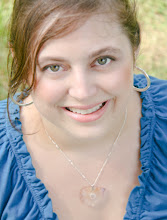I learned about the concept of flow more than 10 years ago when I was first studying Tai Chi and Taoism. The general idea is that life is like a journey down a river that twists, turns and flows. It starts at one point, and there are endless unexpected mini-destinations along the way to your ultimate destination.
Sometimes you can manipulate the flow by blocking it, but it's most effective and so much easier to just get out of the way and let the river carry you along. The Taoist perspective of life is about allowing life to flow while you relax and enjoy the ride.
In her presentation, Erin Elizabeth Wells from Living Peace, showed us how the metaphor about life balance leads us to try to achieve control over things outside of our realm of influence, so we ultimately fail. Instead, she suggested that we view life as a journey instead. The flow of our lives is like traveling down that river I mentioned. Finding flow requires letting go of control and surrendering to the journey all the while holding a vision of the destination in mind to keep you on course.
Rhythm, in this context then, is about how you experience and go through your day to day life on the journey. Erin likened our rhythm to a dancing style, each of us as unique expressions of dance. Some may prefer the orderliness of tap dance, while others flow gracefully as in ballet, or others function best in the unpredictability of modern dance. The idea is to find your authentic rhythm, the one that resonates in your soul, and put your energy and attention into honoring your needs and creating routines to support your rhythm. And yet embracing the cycles of change that inevitably pop up on the journey.
Finding your rhythm and flow is about creating an authentic lifestyle with routines that support your values and needs, all the while being fully present and willing to surrender to change when it inevitably pops up.
How do you find your rhythm and flow?
Erin suggested creating a bucket list of big dreams, writing a purpose statement for your life along with a time line or action plan of how to reach your goals and fulfill your life purpose. You could also create a vision board that lays all that out visually. (I have 3 different vision boards representing different aspects of my life.) These tools are the "boat" and "sails" of your life flow.
For me, rhythm was the hardest concept to figure out. For years I had a life structured by work and marriage commitments. When given a blank slate two years ago, I really didn't know what my authentic rhythm looked or felt like. I just knew that what I had been doing wasn't working for me.
So what I did was practice visioning my ideal, yet realistic, day, week and month. And then I mapped it out with a time map and started experimenting. I made sure to include my morning meditation & visioning time, self-care, breaks, and for my business I mapped out specific client blocks and focused work time. I tweak the time map every season and whenever something in life changes and necessitates a new rhythm.
To start, try to remember a time when you felt like you were in the groove with your day to day life, where everything flowed effortlessly and you weren't rushed or forgetful. I encourage you to use visioning to sort out If you're not sure what your rhythm or flow looks or feels like.
Go somewhere you won't be disturbed and sit comfortably. Close your eyes and take a few slow breaths. Release any tension in your body as you exhale, and allow your breath to center your mind into the present moment. Simply ask yourself "Where am I headed? What rhythm works for me? Then let your imagination run freely. After you finish, write down what you discovered and create that bucket list, vision board and/or time map for yourself.
Joanna offers private mentoring, breakthrough coaching, mastermind programs, and career counseling for emerging and established wellness & holistic health practitioners and women entrepreneurs. In addition, she is a practicing Reiki Master Teacher offering Reiki Certification for all levels.
Recently, Joanna launched The Healing Center of Beverly as a collaborative community of emerging and established practitioners to fulfill her dream of opening a sustainable wellness center with a business model where practitioners are empowered, respected and supported in the work they do, collaboration and community are valued, and everyone's success is celebrated.
Joanna can be reached at info@joannascaparotti.com or 978-338-5571.
